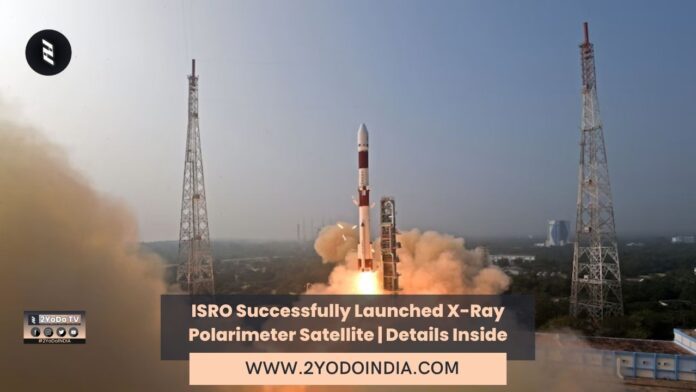ISRO successfully launch its maiden X-Ray Polarimeter Satellite that would offer many insights into celestial objects like black holes. ISRO’s ever reliable Polar Satellite Launch Vehicle (PSLV) in its C58 mission, place the primary X-Ray Polarimeter satellite XPoSat into a 650 km Low Earth Orbit as intended after lifting off at the pre-fix time of 9.10 am from the first launch pad in Sriharikota.
As the 25-hour countdown conclude, the 44.4-metre-tall rocket lifted off majestically with thunderous applause from spectators who had descend here in large numbers at this spaceport situated about 135 km east of Chennai.
The X-ray Polarimeter Satellite (XPoSat) is aim to investigate the polarisation of intense X-ray sources in space.
PSLV-C58/XPoSat Mission:
— ISRO (@isro) January 1, 2024
Lift-off normal 🙂
🛰️XPoSat satellite is launched successfully.
🚀PSLV-C58 vehicle placed the satellite precisely into the intended orbit of 650 km with 6-degree inclination🎯.
The POEM-3 is being scripted …#XPoSat
According to ISRO, it is the first dedicate scientific satellite from the space agency to carry out research in space-based polarisation measurements of X-ray emission from celestial sources.
The X-Ray polarisation serves as a crucial diagnostic tool for examining the radiation mechanism and geometry of celestial sources.
The primary payload of XPoSat is POLIX (Polarimeter Instrument in X-Rays) which is design to measure polarimetry parameters by Raman Research Institute and XSPECT (X-ray Spectroscopy and Timing) built by the U R Rao Satellite Centre, Bengaluru.
The Mission life is about 5 years.
ISRO will also launch the state-of-the-art joint venture satellite with NASA, NISAR, in the first quarter of 2024.
Built at a cost of $1.5 billion (approx. Rs. 12,500 crore), NISAR (NASA-ISRO Synthetic Aperture Radar) is target for launch onboard India’s GSLV rocket.
Data from NISAR will be highly suitable for studying the land ecosystems, deformation of solid earth, mountain and polar cryosphere, sea ice, and coastal oceans on a regional to global scale.





